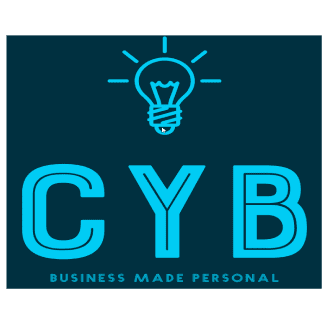Do you ever go on a search engine(probably Google) and search for something you need like plumbers near me or the best websites to buy Christmas gifts? Once you put in your search, you see a few separate results at the top and you decide to check them out. Why? Because our brain has been designed to think that the first few results that pop up are the most trustworthy, right?
Well, those first few links that you saw were paid-per-click ads, or PPC as the modern world likes to call them. But why are we talking about ads in search engine marketing? Because SEM is a mixture of two big marketing tactics used by businesses: PPC and SEO. Actually, SEM is a marketing tactic where a business uses paid ads so that their services can appear right on top of Search Engine Results Pages(SERPs), every time you shoot a keyword or phrase on the search engine.
Let’s find out more about it and we will even let you know the market share of each search engine, so stick around till the end!
What is Search Engine Marketing?
Okay, let’s put it in everyday terms. You know when you type something into Google or Bing, and a bunch of results pop up? Well, that’s where Search Engine Marketing, or SEM, steps in. It’s like making sure your website is right there in the spotlight when people search for things related to what you offer.
Now, SEM has two main things working behind the scenes: paid advertising and organic optimization. Paid ads are like the express lane to getting noticed – you bid on keywords, and your ad shows up when someone searches for those words. On the flip side, organic optimization is the slow-and-steady approach. You tweak your website so that search engines think it’s the bee’s knees and show it higher in the regular search results. Now we know what you’re thinking, those are two completely different approaches, how can they even work together? Well, that’s what makes SEM so good and it shows real results for businesses.

Types of SEM
SEM vs. PPC vs. SEO — What’s the Difference?
Understanding the alphabet soup of digital marketing can feel like decoding a secret language. On one hand, we have SEM, where marketers are using both paid ads as well as organic campaigns to rank higher. But this is where most people start to confuse SEM with PPC. PPC is where your business solely depends on paid ads to bring your business up on search engine rankings without any organic work done.
On the other hand, we have SEO, where we use unpaid strategies like keyword placement in content and backlinking to make the business come up on SERPs. It can get confusing especially if you’ve literally just got to know about search engine marketing.
Here’s a breakdown of each to help you understand how these three tactics relate to each other:
Search Engine Marketing (SEM)
SEM is like the parent term, the umbrella that covers everything. It’s the strategy to boost your website’s visibility on search engines. Now, within the vast world of SEM, you have two main characters: PPC and SEO.
Pay-Per-Click (PPC)
Imagine you’re in a marketplace, and you only pay for the space your advertisement takes when someone actually clicks on it. That’s PPC. It’s like paying for the actual foot traffic in your physical store. You bid on keywords, and when someone searches for those words, your ad can appear. It’s a quick way to get noticed, but the catch is you pay for every click.
Search Engine Optimization (SEO)
SEO is the slow-and-steady racer in this trio. It’s all about making your website naturally attractive to search engines. You tweak your content, improve site speed, and play nice with keywords, aiming to climb up the organic search results. Unlike PPC, you don’t pay for each click, but it takes time to see the results.
Benefits of Using SEM for Marketing
Back in 2001 when Danny Sullivan first came out with the word “search engine marketing”, the marketers refused to even try such a strategy. Back then, it was either SEO, which took its time to show results but it eventually did, or PPC, which worked like lightning to make websites pop up first in search result pages.
Danny decided to join two of these and create something that would be double as effective, and boy did it work. Here are ways that SEM is good if you include it in your marketing plan:
Get Noticed Right Away
Ever wanted to be the first thing people see when they search for what you offer? That’s the magic of SEM. With Pay-Per-Click (PPC) ads, your business can jump straight to the top of search results, making you instantly visible in front of people who are searching online. So if you run a small business selling stationery and keychains and someone searches for ‘cute keychains as gifts’, then our business will be among the first few to pop up on the search engine. And guess who’s clicking on that? Your future clients!
Talk Directly to Your People
SEM lets you be picky (in a good way). With PPC, you can show your ads specifically to folks interested in what you’re selling. It’s like having a conversation with the exact audience you want. You bid on keywords, and when someone searches for those words, your ad pops up. It’s not a shot in the dark; it’s a targeted bullseye that brings the customer in every single time.
See What’s Working, Instantly
Imagine having a dashboard that tells you exactly how well your marketing is doing. That’s SEM for you. With tools like Google Ads, you can track everything in real-time. Clicks, impressions, conversions – it’s all there. This data isn’t just numbers; it’s your marketing compass. See what’s working, tweak what’s not. Change and update your strategy as you go.
Stay Flexible with Your Budget
No matter the size of your business, SEM plays nice with your budget. With PPC, you decide how much you want to spend daily or monthly. It’s like having a financial remote control for your ads. Test the waters, adjust as you go, and never feel stuck with fixed expenses. It’s marketing that grows with you.
Become a Familiar Face
Ever notice how some brands seem to pop up every time you search for something? That’s the SEM effect. Once your business starts popping up once, twice, thrice and more times, the person sees it as a sign of credibility that yes, this website can be trusted because it’s always ranking on top. And people even start recognizing it. Whether through ads or climbing the organic search ladder, SEM gives you a familiar face in the online crowd. When people trust you, they’re more likely to choose you.
How to Start with SEM? A Beginner’s Guide

So, where to start with this new strategy? Can’t find any online guides that tell you how to start SEM from scratch? Don’t worry, here’s everything you need to know:
Define Your Objectives
First decide why you need to implement this strategy in the first place. Are the old marketing strategies not bringing in enough revenue? Do the stakeholders want you to switch up the marketing strategies for the new year? You might be looking to increase website traffic and focus on creating ads or content that grab attention. For driving sales, keep your keywords and content more toward conversion. Want to make people aware of your brand? Craft ads that tell your story.
Know Your Audience
Your audience is like a group of friends with different tastes. Get to know them. Understand what they like and dislike online. It’s like picking the right playlist for a road trip – makes the journey more enjoyable.
Keyword Research is Key
Keywords are the secret words people type into search engines. Use tools to find these words. Think of them as the ingredients for your online dish – a mix of flavors (broad and specific keywords) to cater to everyone’s taste.
Start with a Modest Budget
If SEM is a game, starting with a small budget is like playing the first level before going all-in. It lets you test the waters without emptying your wallet. Treat it like a trial run – learn what works, adjust, and then go big.
Continuous Monitoring and Learning
SEM is like a garden; it needs tending. Regularly check your campaign’s progress. It’s like looking after a plant – see what makes it grow and what needs a bit more attention. It’s a learning process – small tweaks make a big difference over time.
Now these were some general tips to get the ball rolling on SEM. We have further divided the content into two specific sections to help you tackle each one separately.
PPC (Pay-Per-Click)
- Create a Google Ads Account
Imagine opening an online store. Setting up your Google Ads account is like unlocking the door. First, decide how much you want to spend – your budget. Choose keywords that match what customers might type when looking for your products. It’s like stocking your virtual shelves. Lastly, write ads that are like friendly store signs, guiding visitors inside.
- Craft Engaging Ad Copy
Your ad copy is the helpful salesperson. Keep it simple and interesting. Use phrases like “Explore Now” or “Discover Exclusive Deals.” Think of it as putting up signs that say, “Hey, come see what we have!” And don’t forget a clear call-to-action, like pointing customers to the checkout.
- Focus on Relevant Keywords
Keywords are the GPS for your online store. Use Google’s tool to find the right ones – like putting up road signs leading straight to you. Make sure they match what customers are searching for. It’s the magic ingredient that makes sure that your store pops up when they’re looking.
- Utilize Ad Extensions
Ad extensions are like adding extra features to your online store. They’re the little bonuses that make you stand out. Use site links to direct customers to specific areas, callouts to highlight cool stuff, and location extensions to guide local shoppers. It’s like having extra signs saying, “Check out this cool section!”
- Set Realistic Bids
Bidding is like deciding the price for items at a garage sale. Be strategic – not too high, not too low. Think of it like offering a fair deal. You want people to stop by without feeling like they’re spending too much. This way, you get visitors without burning a hole in your pocket.
SEO (Search Engine Optimization)
- Optimize Your Website
There’s no use in paying thousands of dollars on PPC marketing if you don’t even have a good website to begin with. Start with the basics – optimize titles, which are like the signs on your front door, meta descriptions, the short blurbs that tell visitors what to expect inside, and content, the actual stories, and information. Make sure to add all the relevant keywords inside naturally so it doesn’t sound stuffed and weird to the people who end up on your website after PPC. This might cause them to leave your website as soon as possible, increasing the bounce rate and hurting the bottom line at the same time.
- Quality Content is King
Content is king, so treat it like the royalty it is. You need content that should provide some value to the readers too. If you make all your blogs, articles, website content, and social media about your own business then this will end up frustrating the reader who came to the website for some useful info. Search engines love fresh and informative stories. Regularly update your website with valuable information and be very smart about presenting your own products and services as the solution covered with actual information. You don’t want to push the service on the users.
- Build Quality Backlinks
Backlinks help to build a good reputation in front of the search engine so it has mercy on you when ranking your website. Add as many links as you can from other reputable websites. Why does this work? Because having links from these websites shows the search engines that yes, our content is very trustworthy and our website is reliable enough to rank high on the SERPs. This way you’re setting your authority and search engines absolutely adore websites that do backlinking.
- Mobile Optimization
If you need something like a gadget or want to look for good cafes near your area, do you wait until you have your laptop or PC with you to search for it or do you just Google it from your phone? If you answered the latter, then you’re one of the billions of people who prefer to search on mobile phones these days. And this is one of the biggest reasons why you need a web design on the website that looks good and functions well on different devices. Every time someone visits your website, they love how all the buttons are easy to access, the layout doesnt go out on the phone and you can place an order from the phone just as easily as you would on a desktop. All these things help improve the conversion rates.
- Targeting More Then Keywords
You’ve got your keywords sorted, but what if you want to improve your reach even more? Fear not! Google and other SEM/PPC providers offer some great targeting options aside from just keywords:
- Location Targeting:
Want to get the attention of your neighbors or specific global regions? Location targeting is your go-to.
- Scheduling:
Timing is everything, especially in the world of digital advertising. With scheduling, you can decide when your ads shine the brightest. If your store is buzzing during the weekends, why waste budget on ad impressions when the doors are closed?
- Audience Targeting:
Don’t forget the demographics of the places you plan to target. Think of different factors like age, gender, location, and even previous search history. This way you can turn your ad for every audience.
- Retargeting Campaigns:
Ever had a customer visit your website but slip away without even buying anything? Retargeting campaigns, enter. Target people based on how they interacted with your brand the last time they opened your website.
Understanding Search Engine Market Share

If you want to know something or find a specific product then your first thought would be to Google it. And that’s not just your first thought, it’s been so for the majority of people over the internet. But it’s not like Google is ruling the search engine world because it’s the only contender there. No. There are in fact 20 more search engines out there but most of us only work with Google or Bing.
Other search engines include names like Baidu, Yahoo, Yandex, OneSearch, DuckDuckGo, Naver, and Dogpile. Haven’t heard of these search engines? Well, here’s what the search engine market share is saying as of December 2023:
- Google – 91.61%
- Bing – 3.38%
- YANDEX – 1.65%
- Yahoo! – 1.12%
- Baidu – 0.96%
- DuckDuckGo – 0.51%
Wrapping Up
Danny Sullivan did something incredible. He took the best qualities of PPC campaigns and joined them with the converting techniques of SEO and created SEM, a marketing strategy that rules the world. And the best part is that if you run either of these marketing campaigns separately, you wouldn’t get the same level of results from your customers.


